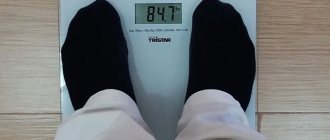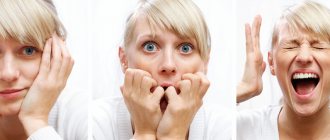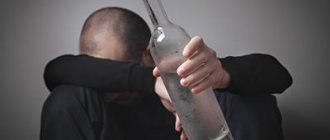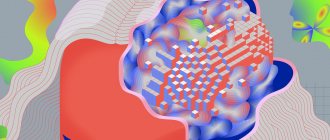Depression is a condition that can be caused by somatic or nervous disorders, or be a consequence of stress, family troubles, or other problems in personal or social life. It can also develop absolutely without any external reasons, against the background of complete well-being - in this case, the cause, as a rule, is a violation of the level of neurotransmitters in the brain.
To receive quality treatment, the patient must realize that bad moods can occur in absolutely healthy people. While with depression, low mood or depression lasts for at least two weeks and may be accompanied by sleep disturbances, appetite, decreased performance and other symptoms, which we will discuss later.
Depression can occur in people of any age, regardless of gender. The death of a close friend, relative, loved one or child can be a catalyst for progressive feelings of sadness. Sometimes the only beloved child, unexpectedly for those around him, becomes unsociable and withdrawn. We need to try to figure out the reasons as quickly as possible and help him gain faith in himself. A simple misunderstanding among classmates and friends or the appearance of another child in the family can disrupt the psychological balance and become the root cause of depression.
Prediction and distribution of depression
It is safe to say that depression is the most common psychological illness. It has been successfully treated for a long time; a specialist is able to restore the patient’s faith in himself in a few sessions. Most often, women who seek help are those who, due to their mental characteristics, are more susceptible to stress. Of the four ladies, one had to seek specialized medical help at least once in her life. Men are more resilient in this sense; only one in ten bothers psychologists with requests for help with a depressive episode. This prevalence of the disease is compensated by the fact that in 90% of cases, people who consult a doctor completely get rid of the disease.
Symptoms of recurrent depressive disorder
In the International Classification of Diseases, 10th revision (in the fifth section, which deals with mental and behavioral disorders), recurrent depressive disorder is defined as an affective disorder that is characterized by recurrent attacks (episodes) of depression, without a history of periods of elevated mood and hyperactivity with revaluation themselves and their capabilities (hypomania or mania), which could indicate a mixed affective episode or bipolar affective disorder (BD).
Symptoms
The first thing that catches your eye when talking with a person who is depressed is joylessness and pronounced depression. Melancholy and anxiety can be read on the patient’s face. In this state, people feel abandoned and forgotten, it seems to them that friends and relatives have turned their backs, and the world around them wants to get rid of their presence as quickly as possible. When talking with such patients, you can find that they most often complain about:
- A sharply decreased appetite or a complete loss of interest in food (although with the so-called “atypical depression”, on the contrary, the appetite increases and there is a craving for sweet, starchy, and sometimes fatty foods - the person “eats” depression and can gain several kilograms in a relatively short period of time) .
- Having problems sleeping. Constantly haunted by nightmares, night's sleep becomes superficial and light, not bringing a sense of rest. In order to fall asleep, you need to take strong medications. After waking up, such people do not feel relief; fatigue does not leave them.
- The feeling of joy goes away. Even ordinary physiological pleasures become inaccessible.
- Interest in the events happening around is lost, even if they directly concern the person.
- Loss of strength is expressed in the reluctance to do the usual work. A little tension causes an attack of mortal fatigue.
- It is difficult to concentrate on simple life situations.
- Symptoms are often expressed in absolute helplessness and a feeling of uselessness to loved ones.
- A painful feeling of guilt that arises for any reason (or “the beginning of a feeling of guilt” - the feeling “I’m disturbing everyone,” “it would be better without me”) is a very dangerous symptom from the point of view of the risk of a suicide attempt.
F34 Chronic (affective) mood disorders.
F34.0 Cyclothymia.
A. A period of at least two years of unstable mood, including alternating periods of both depression and hypomania with or without intermediate periods of normal mood.
B. Absence during a two-year period of symptoms of depression or hypomania that were of sufficient severity or duration to meet the criteria for a manic episode or a depressive episode (moderate to severe); however, manic or depressive episodes may occur earlier or may develop later than such periods of unstable mood.
B. During at least some of the periods of depression, at least three of the following symptoms must be present:
1. decreased energy or activity; 2. insomnia; 3. decreased self-confidence or feelings of inferiority; 4. difficulties in concentrating; 5. social isolation; 6. decreased interest or pleasure in sex or pleasurable activities; 7. decreased talkativeness; 8. pessimistic attitude towards the future and negative assessment of the past.
D. During at least some of the periods of increased mood, at least three of the following symptoms must be present:
1. increased energy or activity; 2. reducing the need for sleep; 3. increased self-esteem; 4. heightened or unusual creative thinking; 5 increased sociability; 6. increased talkativeness or cleverness; 7. increased interest in sex and increased sexual relations and other activities that bring pleasure; 8. over-optimism and overestimation of past achievements.
Note. If desired, it can be determined whether the onset is early (adolescence or before age 30) or late (usually between age 30 and 50 following the affective episode).
F34.1 Dysthymia.
A. A period of at least two years of persistent or recurrent depressive mood. Intermediate periods of normal mood rarely last more than a few weeks and there are no episodes of hypomania.
B. No or very few isolated episodes of depression during these two years that are of sufficient severity or duration of sufficient duration to meet the criteria for recurrent mild depressive disorder (F33.0).
B. During at least some of the periods of depression, at least three of the following symptoms must be present:
1. decreased energy or activity; 2. insomnia; 3. decreased self-confidence or feelings of inferiority; 4. difficulties in concentrating; 5. frequent tearfulness; 6. decreased interest or pleasure in sex or other pleasurable activities; 7. feeling of hopelessness or despair; 8. inability to cope with routine responsibilities of daily life; 9. pessimistic attitude towards the future and negative assessment of the past; 10. social isolation; 11. decreased talkativeness.
Note. If desired, it can be determined whether the onset is early (in adolescence and before 30 years of age) or late (usually between 30 and 50 years of age following the affective episode)
F34.8 Other chronic (affective) mood disorders.
This is a residual category for chronic affective disorders that are not sufficiently severe or durable to meet the criteria for cyclothymia (F34.0) or dysthymia (F34.1), but which are nonetheless clinically significant. This includes some types of depression previously called "neurotic" but does not meet the criteria for either cyclothymia (F34.0), dysthymia (F34.1), mild depressive episode (F32.0), or moderate depressive episode ( F32.1).
F34.9 Chronic (affective) mood disorder, unspecified.
How depression physically manifests itself
People who are depressed often experience headaches, accompanied by dizziness and sometimes loss of consciousness. Aching pain in the heart area and heaviness in the abdomen may appear. Patients begin to complain of aching muscles and joints. The work of the gastrointestinal tract is accompanied by unsystematic changes in diarrhea and constipation. In women, the menstrual cycle is disrupted, and men may completely lose interest in sexual activity. Many somatic diseases can be a manifestation of depression. It is for this reason that among specialists there is the concept of masked depression. A similar term explains the condition when the disease is hidden behind somatic disorders. Statistics paint an alarming picture, stating that at least a third of patients visiting surgeons, internists, endocrinologists, gynecologists and other specialists, in fact, suffer from depression.
Depressive episode and its dangers
In this state, a number of patients have an irresistible desire to commit suicide. Severe depression can lead to suicide. An inexplicable feeling of anxiety or melancholy pushes people between the ages of fifteen and twenty-five to take rash, spontaneous actions. This is the most dangerous period of life, when a lack of worldly wisdom can push you to a terrible point. Every day, about fifteen people die attempting suicide. Experts say that depression most often leads people to suicide. If you are plagued by feelings of anxiety, joylessness, or depression of an inexplicable nature, do not delay visiting a specialist.
Types of BAR
In the modern classification of the disease, the following types are distinguished:
- unipolar – pronounced phases of depression or the manifestation of only manic episodes;
- correctly intermittent - alternating episodes of mania and depression, separated by an intermission phase (restoration of normal mental activity);
- incorrectly alternating – depressive and manic episodes alternate through interphase without observing the order;
- double type – a change of episodes without intermission followed by a period of restoration of normalcy;
- circular – absence of a stable mental state with successive changes in episodes of mania and depression.
Types of depression
Once you see a doctor, you can count on a correct diagnosis and quick treatment results if the specialist can objectively determine the form of the disease. Timely recognition and application of proven treatment methods guarantee a quick exit from an anxious state.
- Neurotic depression is a patient’s condition when he reacts painfully to various problems and becomes withdrawn and depressed for any reason. With neurotic depression, patients have difficulty getting out of a traumatic situation.
- Situational or reactive depression differs from neurotic depression in that the patient responds more quickly to treatment. A correct diagnosis and strict adherence to the specialist’s recommendations make it possible to quickly cope with the disease.
- With endogenous depression, not only personal qualities and people’s reactions to changing situations are involved in the process of formation of the disease state, but also metabolism, genetic characteristics, and heredity. The disease sometimes manifests itself without any reason or pressure from external factors. In this case, the trigger can be not only stress, but also a common cold or a banal change in the weather. Women during menopause should pay special attention to sudden mood changes. Endogenous depression manifests itself most clearly in the morning, and neurotic depression in the evening.
- Bipolar depression has its own dangers. A severe form of the disease leads to a painful, manic, elevated state, when inexplicable joy makes one perform wonderful deeds. Often such an unreasonable rise in mood sharply turns into a feeling of melancholy.
- Unipolar types of depression are not accompanied by sudden mood swings. In this case, joylessness and depression constantly weigh on the patient’s shoulders.
Depressive disorders (DD) are one of the most pressing health problems, and their importance is underestimated. According to a large epidemiological study conducted by the World Health Organization, unipolar DR ranks second in the number of years with disability (YLD index) over the past 20 years (from 1990 to 2010), significantly ahead of oncological, cardiovascular, and infectious diseases [13]. However, DD is underdiagnosed and undertreated, especially outside of psychiatry practice by neurologists, internists, and other physicians. In order to improve the diagnosis and treatment of emotional, affective and other mental disorders in specialized neurological centers, both a neurologist and a psychiatrist are involved in the management of patients.
Depressive disorders are primarily a syndrome that occurs in a wide range of psychiatric, neurological and somatic diseases. Depressive disorders are one of the most common comorbid disorders in neurological diseases. Thus, every third patient with epilepsy experiences at least one depressive episode throughout his life. Several cross-sectional studies have shown the prevalence of post-stroke depression to be 30–50%. The presence of symptoms of depression was noted in 80% of patients with multiple sclerosis and in 45% with Parkinson's disease. Depression is an integral part of chronic pain syndromes, and its prevalence in chronic pain can reach 85%.
The prevalence of DR among patients with diabetes mellitus is 3–4 times higher than that in the population. Primary unipolar depression can occur in the practice of both psychiatrists and neurologists in several clinical variants:
- Big DR.
- Dysthymia.
- Unclassifiable DR.
Not every case of low mood can be regarded as depression, and to diagnose DD it is necessary to adhere to the criteria of the international classification.
Diagnostic criteria for major DR (ICD-10):
Basic:
- Depressed mood for 2 weeks or more.
- Loss of interests or ability to experience pleasure.
- Decreased energy, which can lead to fatigue and decreased activity.
Additional:
- Decreased ability to concentrate.
- Decreased self-esteem and sense of self-confidence.
- Ideas of guilt and self-deprecation.
- A gloomy and pessimistic vision of the future.
- Suicidal ideation or actions.
- Disturbed sleep.
- Decreased appetite.
The severity of a depressive episode is rated as mild (at least two of the three main and two of seven additional features), moderate (at least two of the three main and four of seven additional features), severe (three main and at least five of the seven additional features). However, not all cases of major depression can be diagnosed using ICD-10 criteria. DSM-IV-TR criteria are more sensitive.
Diagnostic criteria for major depressive disorder:
A. Five or more of the following symptoms must present during the same two-week period and alter the patient's functional status; At least one symptom must be present, either (1) decreased mood, or (2) decreased interest or ability to enjoy (symptoms clearly associated with a general medical condition should not be included):
Depressed mood most of the day, almost every day, according to both the patient himself (for example, a feeling of sadness or emptiness) and those around him (for example, the occurrence of tearfulness).
A significant decrease in interest and pleasure in all or almost all areas of activity for most of the day (according to both the patient and others).
Significant weight loss without following a special diet or weight gain (for example, a change in body weight of more than 5% per month), or a decrease/increase in appetite almost every day.
Insomnia or hypersomnia almost every day.
Psychomotor agitation or retardation almost every day (according to others, and not just a subjective feeling of anxiety or slowdown).
Increased fatigue or decreased internal energy almost every day.
Feelings of worthlessness or excessive and inappropriate guilt (which can be delusional) almost every day (not just self-reproach or guilt about your illness).
Decreased ability to think or concentrate or make decisions almost every day (according to both the patient and others).
Recurrent thoughts about death (not just fear of death), repeated suicidal ideas without a specific plan for their implementation, or a suicide attempt or a specific plan for the implementation of suicide.
B. The symptoms do not meet the criteria for a mixed episode (anxious-depressive).
B. Symptoms result in clinically significant distress and impairment in social, occupational, and other activities.
D. The development of symptoms is not associated with the direct psychotropic effect of any substances (for example, drugs or medications) or a general disease (for example, hypothyroidism).
E. Symptoms cannot be explained by a bereavement such as the loss of a loved one, symptoms persist for more than two months, or are characterized by significant functional impairment, self-blame, suicidal ideation, psychotic symptoms, or psychomotor retardation.
According to DSM-IV, depressive symptoms can also be rated by severity (mild, moderate, or severe), presence of psychosis (mood- or mood-incongruent delusions and hallucinations), and remission (partial or complete). Major DR is defined as a single or several repeated episodes, the interval of remission between which is at least 2 months.
Dysthymia is a chronic disorder in which low mood persists for a period of at least 2 years.
DSM-IV-TR dysthymia criteria:
A. Depressed mood persists for most of the day, for the prevailing number of days over a period of at least 2 years, which is confirmed by subjective complaints or objective observations.
B. Depression is accompanied by two or more of the following symptoms: decreased appetite or overeating, insomnia or drowsiness, weakness or fatigue, low self-esteem, decreased concentration or difficulty making decisions, and feelings of hopelessness.
B. Absence for 2 years of a clear period of disorder lasting more than 2 months at a time, during which the symptoms from points A and B are not observed.
D. Absence of a major depressive episode during the first two years of the disorder (to exclude chronic DR or major DR with partial remission).
D. No history of manic, mixed or hypomanic episodes, and no criteria for meeting cyclothymic disorder.
E. This disorder does not occur as part of a chronic psychotic disorder such as schizophrenia or delusional disorder.
G. The symptoms of the disorder are not caused by the psychological effects of psychoactive substances (eg, narcotics or drugs) and are not the result of a medical condition (eg, hypothyroidism).
H. Symptoms of the disorder cause clinically significant impairment or impairment in social, business, or other important areas of functioning.
Unclassifiable DDs include premenstrual dysphoric disorder, minor depressive episode (episodes of at least 2 weeks of DD with less than 5 symptoms required to correspond to a major DD), recurrent short DD (depressive episodes lasting from 2 days to 2 weeks, occurring at least at least once a month for a year and are not associated with the menstrual cycle), postpsychotic DR in schizophrenia.
A natural concern of a doctor who has no experience in managing psychiatric patients is the incorrect diagnosis of DD. Depressive episodes within the framework of DR must first of all be differentiated from depressive syndromes in reactions of bereavement and bipolar disorders (manic-depressive psychosis). The reaction of bereavement (grief) can be represented by the same symptoms as major DD, but their severity, duration and impact on social activity differ (Table 1).
Bipolar disorder may begin with a depressive episode. Acceleration of thinking, psychotic features, drowsiness, increased appetite, early age of onset of the disease, recurrent course of depression are signs indicating the possible bipolar nature of the disorder. The algorithm for differential diagnosis of the above subtypes of DR from depressive episodes in the structure of bipolar disorder is presented in the figure.
Symptoms of depression can be observed in various neurological diseases: in the post-stroke state and chronic cerebral ischemia, in neurodegenerative diseases (Parkinson's disease and parkinsonism syndromes - progressive supranuclear palsy, Alzheimer's disease, Gettington's chorea, multiple sclerosis, epilepsy, sleep apnea syndrome, after suffered traumatic brain injury, Wilson-Konovalov disease, infectious diseases of the central nervous system - neurosyphilis and HIV, chronic pain syndromes). There is evidence that mood changes in neurological diseases are not simply a reaction to the development of a serious illness. Thus, the presence of serotonergic deficiency in Alzheimer’s disease has been proven [9]. In post-stroke depression, symptoms develop when blood circulation is impaired in “strategic zones” - the brain stem, basal ganglia, and frontal lobe cortex. It is also important to note that depressive symptoms can occur against the background of many medications: corticosteroids, cytostatics, antiepileptic drugs [6].
Depressive disorders in neurological diseases have peculiarities of their course. They can present with much more varied symptoms than in primary affective disorders. Thus, in half of patients with epilepsy, DR does not meet the DSM-IV criteria and can be considered as unclassifiable DR. Specific diagnostic criteria have been developed for depression in dementia.
Specific symptoms of depression in various neurological diseases [4, 7]:
- for stroke and dementia: “catastrophic” reactions consisting of episodes of agitation and aggression interspersed with symptoms of depression (eg crying or suicidal ideation);
- for patients with bilateral damage to the corticonuclear tracts (for example, with multiple sclerosis, chronic cerebral ischemia), pseudobulbar syndrome is characteristic, manifested by excessive emotional outbursts, violent laughter and crying;
- In patients with epilepsy, ictal or peri-ictal symptoms of depression may precede or follow an epileptic seizure, or be a clinical manifestation of the seizure itself. Postictal depressive symptoms are common in intractable epilepsy with both partial and generalized seizures.
The bipolar course of depression can also be observed in neurological diseases - epilepsy, multiple sclerosis, Gettington's chorea, neuroinfections, and post-stroke depression [9]. Bipolar disorder is more common in migraines than in the general population. It is necessary to clarify the presence of episodes of mania in the anamnesis in patients with depressive episodes in these neurological diseases [6].
“Masked” or somatized depression deserves special attention, since patients with this form of depression turn primarily to a neurologist or general practitioner. Somatized depression is a variant of DR in which the patient, in the presence of somatic symptoms, denies changes in mood. With somatized depression, complaints are made about dysfunction of several systems: the central nervous system, cardiovascular, digestive, and urinary. Chronic pain syndromes are characteristic. Thus, the multisystem nature of disorders is one of the main clinical signs that distinguish somatized DR from somatic disease. Symptoms such as sleep disturbances, constant feeling of fatigue, changes in appetite, lethargy and impaired concentration, as well as chronic pain in a patient with a physical illness always require the exclusion of depression.
A phenomenologically close condition to somatized depression is somatoform disorder. In US practice guidelines, somatoform disorders are included in the broader concept of somatization - a syndrome of nonspecific physical symptoms that cannot be explained by any medical condition. Somatoform disorder may be accompanied by anxiety and depression, but they are not obligatory for somatoform disorder [3].
Clinically, somatoform disorder is characterized by:
- the presence of various somatic complaints;
- patients are focused on these complaints and require examination;
- the absence of any confirmed medical condition or disease that may cause these complaints;
- long history of examination by doctors (usually more than 2 years);
- patients cannot be convinced that they do not have the disease, despite the assurances of several doctors.
To successfully manage patients with somatoform disorders, the following techniques are recommended: take the patient’s symptoms seriously, never attribute all symptoms to psychosomatics (“it’s all in your head”), schedule regular visits and conduct a physical examination. In the presence of DR, patients with neurological diseases turn primarily to a neurologist. A neurologist can prescribe treatment independently in case of dysthymia or minor depressive episode. However, absolute indications for consultation with a psychiatrist are the presence of suicidal thoughts, psychotic disorders, resistance to the prescription of selective serotonin reuptake inhibitors (SSRIs) or selective serotonin and norepinephrine reuptake inhibitors (SNRIs) in therapeutic doses. There are particularities in the management of depression and the prescription of antidepressants in bipolar disorder, so prescriptions for such patients must be discussed with a psychiatrist.
The most commonly used scales for screening for depression are the Beck Depression Inventory, the Hamilton Depression Inventory, and the Hospital Anxiety and Depression Scale. Clinical symptoms indicating possible depressive early morning awakenings, loss of appetite and rapid weight loss, daily distribution of manifestations of the disease with a peak of poor health in the morning, a feeling of severe fatigue that precedes mental or physical activity, a history of depressive episodes, incl. with relatives. If depression is detected, antidepressants should be prescribed.
Treatment with antidepressants includes several phases:
- Therapeutic response is the initial response to treatment during the first 8 weeks of therapy.
- Remission is complete regression of symptoms of depression.
- Recovery – stable remission for 6–12 months.
Full or partial effect of antidepressants is observed among 85–90% of patients with depression. It is very important to maintain a duration of therapy of 6–12 months; a shorter course of therapy carries a high risk of relapse. The risk of relapse is especially high for patients with a history of multiple depressive episodes, incomplete regression between relapses, prolonged and severe episodes of depression, the presence of psychotic symptoms or bipolar course, with concomitant anxiety disorders.
When choosing an antidepressant, it is necessary to take into account both its effectiveness against depression and the lack of pharmacokinetic interaction with other drugs taken (for example, antiepileptics, antiparkinsonians).
The following features must be taken into account:
- amoxepin, maprotiline, clomipramine and bupropion may worsen the course of epilepsy and should not be prescribed to such patients;
- SSRIs and tricyclic antidepressants may worsen Parkinson's disease;
- tricyclic antidepressants may worsen cognitive deficits in patients with Alzheimer's disease;
- Some SSRI drugs and tricyclic antidepressants inhibit enzymes of the cytochrome P450 system; these pharmacokinetic interactions must be taken into account in patients taking other drugs.
SSRI antidepressants are safe treatments for depression in neurological diseases. In addition, SSRIs and SNRIs are the drugs of choice for the treatment of concomitant anxiety disorders, as well as somatoform disorders. Therapeutic doses of the most used SSRIs and SNRIs are given in table. 2.
The mild activating effect of Cipralex and the low potential for drug interactions allow the drug to be used for many neurological diseases. Thus, Cipralex can reduce the risk of post-stroke depression, as well as post-stroke apathy, by more than 3 times [5]. In Alzheimer's disease, Cipralex reduces not only symptoms of depression and apathy, but also psychotic and behavioral symptoms [1]. In a long-term prospective study, Cipralex was shown to reduce symptoms of depression and asthenia in multiple sclerosis and reduce the risk of exacerbations provoked by stress [6]. Cipralex is effective against depression in Parkinson's disease [14]. When anticonvulsants are used together with Cipralex, no dose adjustment is required, so Cipralex can be used for depression in patients with epilepsy. Cipralex significantly improves the sleep quality of patients with psychovegetative disorders [2]. The cardiac safety of Cipralex, proven in a placebo-controlled study, allows the drug to be used by older and elderly patients [11].
The most common side effects of SSRIs and SNRIs include anxiety and agitation (during the initial phase of treatment), gastrointestinal disorders (nausea, stomach cramps and diarrhea), loss of appetite and weight, and sexual dysfunction.
In patients with neurological diseases, sexual dysfunction is more common. With concomitant anxiety disorders, there is a high risk of increased anxiety in the first days of use, so a gradual increase in the dose and additional use of anti-anxiety drugs in the first 7-10 days is recommended.
How to identify depression
If a person close to you is constantly gloomy and sheds tears for any reason or without it, he is overcome by thoughts about the imminent end of his life, he constantly looks at everyone as enemies, take him to the doctor or invite a specialist to your home. Treatment will be more effective if you start fighting the disease in a timely manner. This is the case when it is impossible to play it safe. It is easier to fight the disease if a person is aware of the danger and is ready to listen to the doctor’s recommendations. A severe form of the disease requires hospital treatment. If you notice frequent mood swings, lethargy, lack of appetite, or the appearance of unexplained pain in different parts of the body, do not delay, visit a doctor as soon as possible.
Where to look for help
Remember that even though the disease may seem unserious, only a highly qualified psychiatrist with sufficient practical experience can cure it. If you find these symptoms in yourself or your loved ones, we recommend that you contact a specialist.
It is important to convince the patient that help will be effective if the specialist’s recommendations are fully followed. CELT employs doctors who will help you quickly cope with any manifestation of depression. Treatment will always give a positive result if you start working with the patient in a timely manner.
Depersonalization-derealization syndrome is a fairly serious mental disorder that can easily be corrected. If you find these symptoms in yourself or your loved ones, we recommend that you consult a specialist. To clarify the diagnosis and receive qualified medical care, you can contact CELT. This is one of those conditions in the treatment of which our psychoneurologists achieve good results.
Make an appointment through the application or by calling +7 +7 We work every day:
- Monday—Friday: 8.00—20.00
- Saturday: 8.00–18.00
- Sunday is a day off
The nearest metro and MCC stations to the clinic:
- Highway of Enthusiasts or Perovo
- Partisan
- Enthusiast Highway
Driving directions
F30 Manic episode.
F30.0 Hypomania.
A. Elevated or irritable mood that is clearly abnormal for the individual and persists for at least 4 consecutive days.
B. At least three of the following symptoms must be present that affect personal functioning in daily life:
1) increased activity or physical restlessness; 2) increased talkativeness; 3) difficulty concentrating or distractibility; 4) reduced need for sleep; 5) increased sexual energy; 6) minor revelry or other types of reckless or irresponsible behavior; 7) increased sociability or familiarity.
B. The disorder does not meet the criteria for mania (F30.1 and F30.2), bipolar affective disorder (F31-), depressive episode (F32-), cyclothymia (F34.0) or anorexia nervosa (F50.0).
D. Most commonly used exclusion criteria: The episode cannot be attributed to substance use (F10-F19) or to any organic mental disorder (in the sense of F00-F09).
F30.1 Mania without psychotic symptoms.
A. A predominantly elevated, expansive, irritable, or suspicious mood that is abnormal for the individual. This mood change should be clear and last for at least a week (unless it is severe enough to require hospitalization).
B. At least three of the following symptoms must be present (and if the mood is only irritable, then four), leading to severe impairment of personal functioning in daily life:
1) increased activity or physical restlessness; 2) increased talkativeness (“speech pressure”); 3) acceleration of the flow of thoughts or the subjective feeling of a “jump of ideas”; 4) a decrease in normal social control, leading to behavior that is inappropriate to the circumstances; 5) reduced need for sleep; 6) increased self-esteem or ideas of greatness (grandiosity); 7) distractibility or constant changes in activities or plans; rash or reckless behavior, the consequences of which the patient is not aware of, for example, carousing, stupid enterprise, reckless driving; 9) a noticeable increase in sexual energy or sexual promiscuity.
2) increased talkativeness (“speech pressure”); 3) acceleration of the flow of thoughts or the subjective feeling of a “jump of ideas”; 4) a decrease in normal social control, leading to behavior that is inappropriate to the circumstances; 5) reduced need for sleep; 6) increased self-esteem or ideas of greatness (grandiosity); 7) distractibility or constant changes in activities or plans; rash or reckless behavior, the consequences of which the patient is not aware of, for example, carousing, stupid enterprise, reckless driving; 9) a noticeable increase in sexual energy or sexual promiscuity.
B. No hallucinations or delusions, although there may be perceptual disturbances (for example, subjective hyperacusis, perception of colors as particularly bright).
D. Most commonly used exclusion criteria. The episode cannot be explained by substance use (F10-F19) or any organic mental disorder (in the sense of F00-F09).
F30.2 Mania with psychotic symptoms.
A The episode meets the criteria for mania without psychotic symptoms (F30.1), except for criterion B.
B. The episode does not simultaneously meet criteria for schizophrenia (F20.0-F20.3) or manic type of schizoaffective disorder (F25.0).
B. Delusions or hallucinations are present, but other than those listed as typical of schizophrenia in criteria G1.1 b), c) and d) (i.e., delusions that are not completely improbable in content or culturally inappropriate, and hallucinations in which the patient is not discussed in the third person and which do not have a commentary character). The most common examples are delusions of grandeur, meaning, erotic or persecutory content.
D. Most commonly used exclusion criteria. The episode cannot be attributed to substance use (F10-F19) or to any organic mental disorder (in the sense of F00-F09).
The fifth sign can be used to identify delusions or hallucinations as mood-congruent or mood-incongruent:










